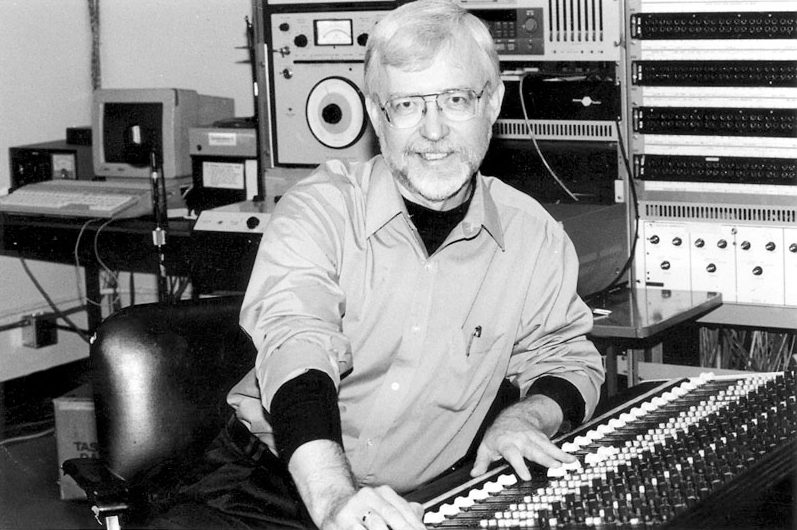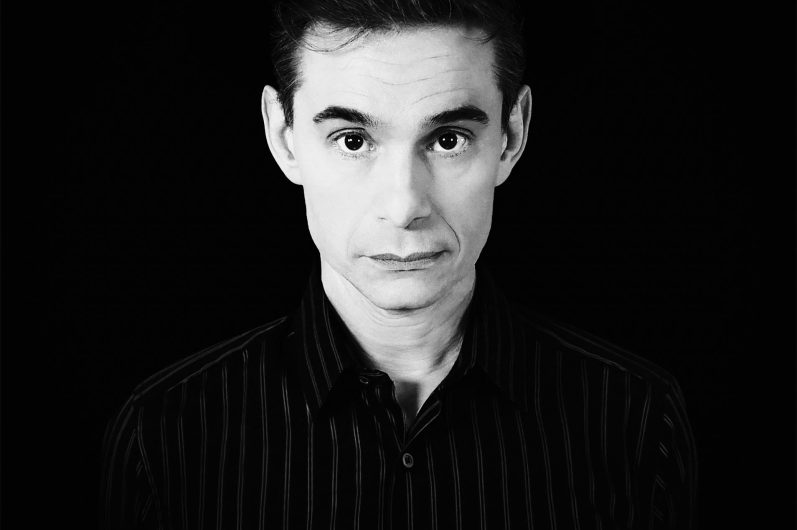BARRY TRUAX / OVAL
INNER_SPACES AUTUMN 2022


Monday, 10th October
h.18 Auditorium San Fedele
“WITH MY EYES FULL OF SOUNDS”
Presentation of Murray Schafer’s The Soundscape. Our acoustic environment and the tuning of the world, new edition by Giovanni Cestino, Le Sfere. New series 5 (Milan; Lucca: Ricordi; LIM, 2022).
with Giovanni Cestino, Barry Truax, Sabine Breitsamter, Nicola Scaldaferri
Moderator: Maurizio Corbella.
Free entry
h.21 Auditorium San Fedele
CONCERT
BARRY TRUAX
Riverrun (1986, 20′)
Rainforest Raven (2020, 11′)
The Shaman Ascending (2005, 15′)
OVAL
Live set
Acousmatic interpretation: Giovanni Cospito, Massimo Colombo
In collaboration with Goethe Institut Mailand, Conservatorio di Musica G. Verdi di Milano, Università degli Studi di Milano
Exceptional evening with the presence of Canadian Barry Truax (1945) in Milan as a professor, with two days of masterclasses at the Conservatory, and as interpreter in the San Fedele Auditorium. He studied with Murray Schafer and immediately participated in the World Soundscape Project, always reserving a great interest in acoustic ecology. He taught until 2015 at Simon Fraser University. A pioneer of computer-educated music, in 1972 he created PODX, a digital synthesis and composition system, which he has since used, in combination with traditional and other electronic techniques, in most of his works. He will present three electronic works from different moments of his production.
Riverrun from 1986, eight channel composition, commissioned by the Venice Biennale, the title is the first word in James Joyce’s Finnegan’s Wake. The composer wanted to create a sound environment in which stasis and flow, solidity and movement coexist in a dynamic equilibrium. The corresponding metaphor is that of a river, always in motion yet apparently permanent. From the smallest stream to the fullest force of its mass, a river is made up of a collection of countless droplets and springs. So too with the sound in this composition which relies on the smallest possible ‘unit’ of sound to create larger textures and masses. The work is entirely made with the sound production method known as granular synthesis. This method produces small units or “grains” of sound, with each grain having a frequency and duration defined separately. The fundamental paradox of granular synthesis suggests a metaphorical relationship with the river whose power is based on the accumulation of countless “powerless” droplets of water. The opening section of the work portrays that buildup, as the individual “droplets” of sound gradually multiply into a powerful broadband texture.
All the sounds in this song were generated with real-time synthesis by the DMX-1000 digital signal processor.
Rainforest Raven (2020, eight-channels) is a soundscape composition, a journey through a West Coast rainforest, starting with water dripping from the rocky ledges at the edge of the forest. Guided by a raven, the overall emotional trajectory for the listener shifts from a joyful component to a very somber one, and eventually daylight resurfaces.
It ends with The Shaman Ascending (2005), an eight-channel, vigorous composition that evokes the imagery of a traditional shamanic figure who sings in search of spiritual ecstasy. The listener is placed inside a circle of speakers around which the phonemes swirl at high speed following a timbral development. The work proceeds in increasing stages of complexity as the shaman ascends to a higher spiritual state. The work and its title are inspired by a pair of Canadian Inuit sculptures by John Terriak of the same name, as well as the throat song of the Inuit. All the vocal material heard in the piece comes from the recording of Vancouver bass Derrick Christian.
Markus Popp (1968), alias Oval, responsible in the 90s for the creation of the glitch as a codified style of experimental electronics, will conclude; with the 1994 album Systemisch, Popp gave shape to a compendium between the “musique concrète” of the 1950s and the ambient-techno styles that would be consolidated in that same decade, using reproduced and sampled sounds of defective or scratched CDs , an undertaking that has influenced the aesthetics of many other authors up to the present day.
The Oval project has been renewed over the years. In 2010, with the EP Oh and the double CD O (awarded by Ars Electronica) he inaugurates a new hyperreal organic style We explore a vast spectrum ranging from delicate and sophisticated pop scenes and cartoons to brutally interrupted electroacoustic repeated motifs, motifs abound edgy and colliding guitarists, accompanied by a “free” but ultra-precise acoustic drums. The O album features 50 moody vignettes with handcrafted polyrhythmic phrases and structures, filled with tiny resonances and details that add up to fluid and timeless melodies.
The last artistic phase of Markus Popp with the album Scis and the EP Eksploio brings out a new palette of sounds by inserting a newfound atmosphere of playfulness in his complex architectures. The author subverts the constitutive elements of club music with electronic rhythms that become driving, but treated as if by an instrumentalist. Oval wanders into a limited space in which to work and explores all possible creative avenues within that structure. The human element is brought to life with sound models created by a series of acoustic instruments. The sounds from piano, wind and strings have been treated and sculpted into intricate sonic layers. The result is a certain free form in the ensemble of the songs, an improvised atmosphere, never hiding behind “electronic abstraction” but rather engaging in a musical dialogue with the listener.
